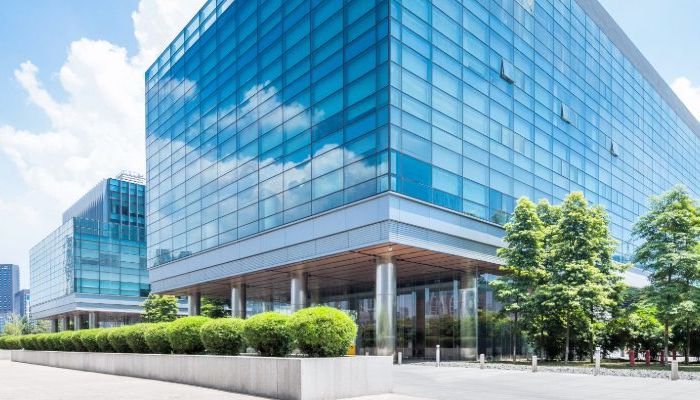Optimizing office space is no longer just about fitting more desks into a room or reducing real estate costs. For modern businesses, space management is a strategic priority that directly impacts productivity, employee satisfaction, and the ability to adapt to changing work patterns.
As companies move towards hybrid and flexible work arrangements, their approach to planning and using office spaces now represents their organizational culture and boosts operational efficiency.
A common misconception is that maximizing space efficiency inevitably leads to cramped, impersonal environments that stifle creativity and collaboration. In reality, thoughtful space planning can create dynamic, comfortable workplaces that support both individual focus and team interaction.
It’s important to find a balance between using space effectively and taking care of employees’ well-being. This means making sure each area is useful while still keeping everyone comfortable and productive.
Space Management Strategies for Modern Offices
Effective space management begins with a clear understanding of how your current office layout is being used.
Begin by assessing the current setup: stroll through the office at various times of the day, observe traffic flow, and note which areas are regularly crowded or quiet.
Digital tools, such as occupancy sensors or simple manual audits, can help identify inefficiencies and underutilized zones.
Spotting underutilized areas is crucial. Look for meeting rooms that are rarely booked, storage spaces that could be consolidated, or corners that serve no clear function. Repurposing these spaces can open up opportunities for new collaborative zones, quiet work pods, or even wellness areas. For example, a seldom-used file room might become a breakout space for brainstorming sessions.
Implementing flexible workspaces and hot-desking is another powerful strategy. By allowing employees to choose where they work each day, you can reduce the number of fixed desks and make better use of available space.
This approach has some challenges. One challenge is making sure everyone can access the resources they need. Another challenge is keeping a sense of belonging among everyone.
Best practices include clear desk policies, robust booking systems, and providing lockers for personal items.
When space management is done well, it leads to increased productivity and higher employee satisfaction. Employees benefit from environments tailored to different work styles—quiet zones for deep focus, open areas for collaboration, and informal spaces for relaxation. Moreover, effective space planning creates flexible work environments that can quickly adapt to business growth, new technologies, or shifts in team structure.
Design Principles That Support Productivity and Space Management
The design of an office plays a pivotal role in both space management and productivity. Choosing ergonomic furniture is a foundational step. Adjustable chairs, sit-stand desks, and modular workstations not only save space but also enhance comfort and reduce the risk of injury. In limited spaces, multi-functional furniture—such as foldable tables or storage-integrated seating—can make a significant difference.
Maximizing natural light and creating open spaces are proven strategies for boosting morale and focus. Position workstations near windows, use glass partitions instead of solid walls, and opt for light-colored finishes to reflect daylight throughout the office. Open layouts can make a space feel larger and more inviting, but it’s important to balance openness with the need for privacy.
Noise control and privacy solutions are essential in shared environments. Acoustic panels, sound-masking systems, and strategically placed plants can help absorb noise and create a more comfortable atmosphere. For tasks that require concentration, consider adding phone booths or small meeting pods. These solutions support collaboration while ensuring that employees have quiet spaces for focused work.
Effective space management also means reducing clutter and optimizing workflow. Encourage a clean-desk policy, provide ample storage, and design clear pathways to minimize distractions and improve movement throughout the office. When employees can easily find what they need and move freely, productivity naturally increases.
Technology’s Role in Effective Space Management
Technology has transformed space planning by providing real-time data and automation tools that make office management more efficient. Smart office tools, such as sensors and occupancy trackers, monitor how spaces are used throughout the day. This data reveals patterns—like which meeting rooms are always booked and which are rarely used—enabling informed decisions about layout changes or resource allocation.
Implementing booking systems for meeting rooms and desks streamlines reservations, prevents scheduling conflicts, and ensures that spaces are used efficiently. Employees can quickly see which areas are available and reserve them as needed, reducing frustration and wasted time.
Data-driven insights are invaluable for continuous space optimization. By analyzing usage trends, organizations can adapt their layouts to meet evolving needs—whether that means adding more collaborative zones, increasing quiet areas, or reconfiguring workstations for new teams. Technology enables real-time adjustments, ensuring that the workspace remains aligned with business goals and employee preferences.
Space planning powered by technology not only improves efficiency but also supports a more agile and responsive workplace. As needs change, adjustments can be made quickly, minimizing disruption and maximizing productivity.
Case Studies: Real-World Office Space Management Success Stories
Small Business Transformation:
A growing marketing agency faced rising rent costs and a cramped office. By conducting a thorough space management audit, they identified underused storage rooms and oversized meeting areas. These were converted into flexible workstations and collaborative lounges. The result was a 20% increase in usable workspace, a reduction in overhead costs, and a noticeable boost in team morale and productivity.
Corporate Example:
A large tech company wanted to foster more collaboration without expanding its office footprint. Through strategic space planning, they replaced traditional cubicles with open work zones, added soundproof pods for private calls, and introduced a hot-desking system. Employee surveys showed a 30% improvement in satisfaction with the work environment, and project turnaround times decreased due to easier team interactions.
These examples highlight how effective space management strategies can lead to tangible business benefits—cost savings, improved productivity, and happier employees—without the need for additional square footage.
Frequently Asked Questions About Office Space Management and Productivity
How much space should be allocated per employee?
Industry standards suggest anywhere from 100 to 200 square feet per employee, depending on the nature of the work and the need for collaboration or privacy. However, with flexible work arrangements and remote work, these numbers can be adjusted based on actual usage patterns.
Are open offices less productive?
Open offices can sometimes lead to distractions, but with proper noise control, privacy solutions, and clear zoning, they can support both collaboration and focused work. The key is to offer a variety of spaces to suit different tasks.
What are the first steps to improve space management?
Start by assessing current space usage, identifying underutilized areas, and involving employees in the planning process. Small changes—like rearranging furniture or introducing booking systems—can have an immediate impact.
How does effective space planning contribute to office productivity?
Effective space planning ensures that every area of the office supports the tasks at hand, reduces wasted time searching for resources or meeting rooms, and creates an environment where employees can do their best work.
Looking Ahead: The Future of Space Management in Productive Workplaces
Emerging trends in office design are reshaping how organizations approach space management. Flexible layouts that can be easily reconfigured, biophilic elements like indoor plants and natural materials, and seamless technology integration are becoming standard features. These trends not only optimize space but also enhance well-being and creativity.
As hybrid and remote work become more prevalent, managing office space requires new strategies. Organizations are adopting shared desks, on-demand meeting rooms, and digital tools to track occupancy and usage. This approach ensures that the office remains a valuable resource for collaboration and innovation, even as fewer employees are present at any given time.
Advancements in space management are shaping the workplaces of tomorrow—making them more adaptable, efficient, and supportive of productivity. By embracing these changes, businesses can create environments that meet the needs of both their people and their bottom line.
Ready to rethink your office space? Start with a space management audit and explore how smart planning and technology can transform your workplace for the better.










